|
Racial segregation and the "Jim Crow" laws After Reconstruction ended in 1877, laws began to be passed in Southern states requiring segregation (separation) of blacks and whites. For example, a state law might require separate railroad cars, hotels, schools, or restaurants for blacks and whites. These laws were called Jim Crow laws. Black leaders and some whites objected to the spread of Jim Crow laws. Even so, the laws became more and more common in the 1880s and 1890s. The photo on the right shows a hotel for blacks only in Tennessee in 1899. |
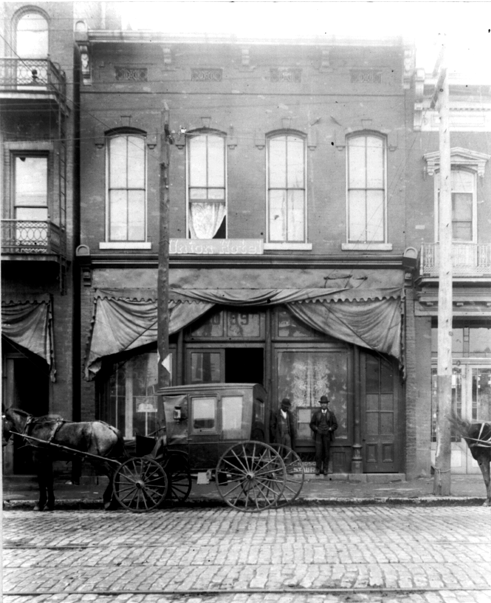 |
|
A Jim Crow
school in Kentucky
The segregated school shown in the photograph below was for black children in a farming area of Kentucky. One-room schoolhouses like this were common in farming areas at that time for white children as well. |
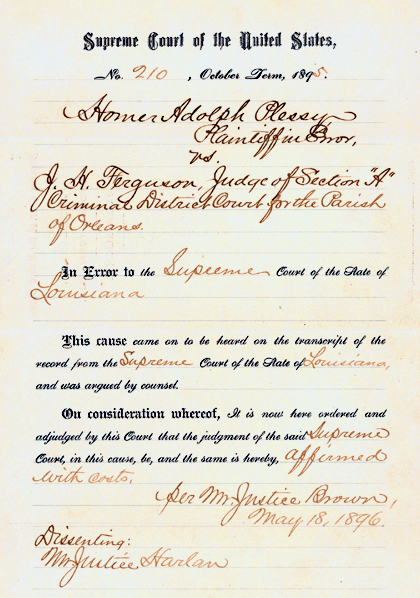 |
The Plessy v. Ferguson case A famous challenge to the Jim Crow laws came from a group of blacks and whites in New Orleans, Louisiana. The group wanted to stop an 1890 Louisiana law that required racial segregation on all trains traveling in that state. Under that law, railroad companies had to provide separate passenger cars for whites and blacks. Homer Plessy, a black man, agreed to challenge the law so a court case could be started. He deliberately sat in a "white" railroad car and was arrested. The case eventually went to the U.S. Supreme Court. Plessy's basic argument was that the 14th Amendment requires the states to give "equal protection of the laws" to all citizens. In 1896 the U.S. Supreme Court ruled against Mr. Plessy. The court said that the segregation law was not illegal, because the Louisiana law required that the separate railroad cars had to be equal in quality. |
|
The "separate
but equal" principle
The decision in the Plessy v. Ferguson case became the origin of the "separate but equal" principle of racial segregation laws. The Plessy case decision is considered one of the worst ever made by the U.S. Supreme Court. It led to the rapid spread of even more segregation laws across the South and in some other states as well. |
|
The
spread of Jim Crow laws
By the early 1900s almost every aspect of life in the South was segregated by Jim Crow laws. Schools, colleges, theaters, amusement parks, beaches, bus stations, restaurants, and hotels were almost always segregated. Public water fountains, often side by side, had one marked "White" and the other "Colored." ("Colored" was a common term for African Americans at that time. Some states outside the South also had segregation laws or policies that promoted racial segregation.) The photo below shows a building in Oklahoma City in 1939 with a separate "Jim Crow" water cooler for African Americans. |
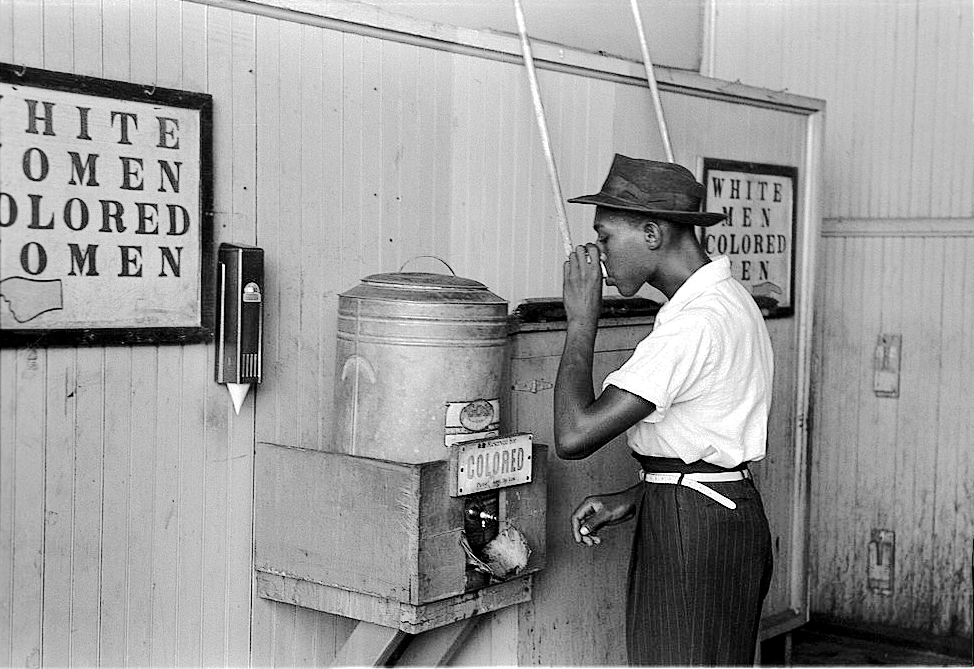
|
A
segregated scene in Memphis, Tennessee
The photo below shows a sidewalk scene in Memphis, Tennessee, in 1939. A billiard hall is a place with pool tables. |
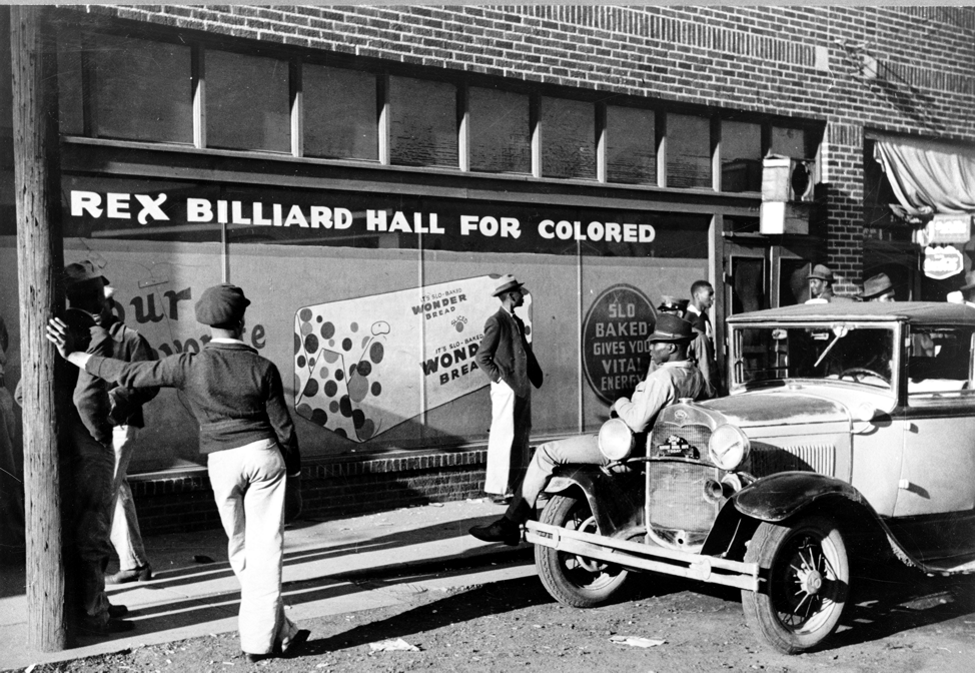
|
Jim
Crow laws were ended in the
1950s and 1960s The Plessy decision was finally changed in a famous 1954 Supreme Court case called Brown v. Board of Education. In that case the court declared segregated public schools illegal. In 1964 Congress passed a law making segregation by race illegal in all public places. Jim Crow laws were finally dead. The photo here shows the same street - Beale Street - that is shown in the photo above, as it looks today. It is now a very popular area of music clubs and restaurants enjoyed by both blacks and whites. |
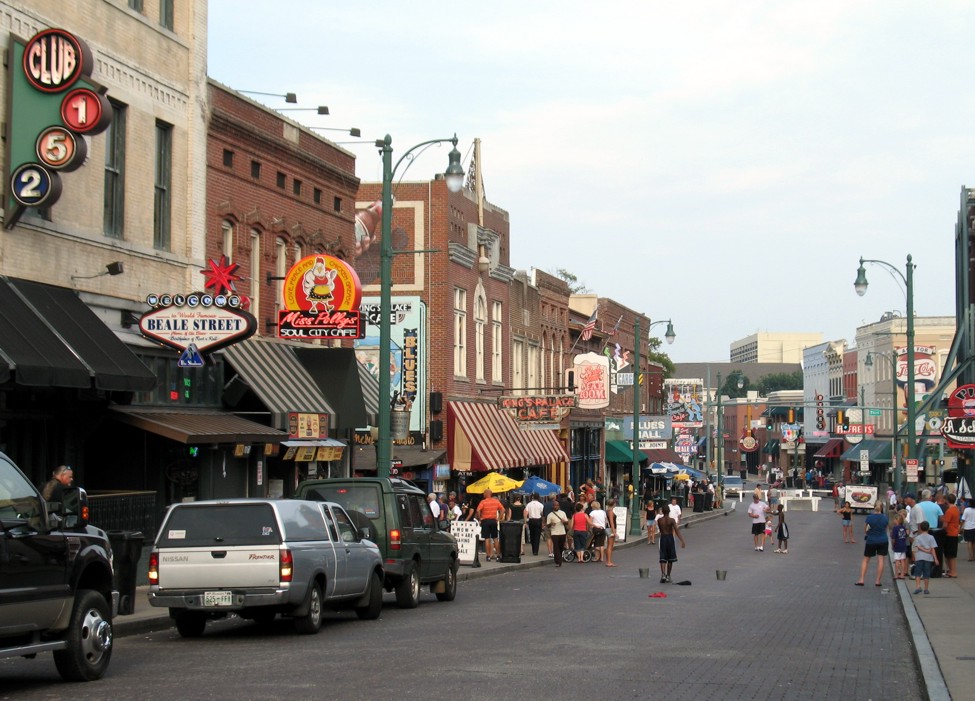
The Supreme Court document image is from the National Archives.
All other historical images are from the Library of Congress.
The color photo of Beale Street is by David Burns
Some have been edited or resized for this page.
|
Copyright Notice
Copyright 2009, 2020 by David Burns. All rights reserved. |